#Matthew Goulish
Text
Finnley Xuereb Mini Research
Finnley Xuereb
Outlaws
Larry Clark finds the ability to create tension between his subject and his viewers. Throughout his career, in his photo book Tulsa and popular movies like KIDS, he sheds light on a darkness that he named the “Outlaw Life”. In this short essay, I will try to understand the duality of difficult subjects and appreciation of beauty. As an audience, our interaction with art is very important. The connection between the piece and the audience is the final interaction for a piece to be complete. How we perceive it is only the starting point for the piece and its cultural context in the world. If a piece does not shock you, it probably won’t get you to talk about it. As an observer, what stands out to you is what you are going to talk about. In Matthew Ghoulish's essay, How Does a Work Work Where, his philosophy surrounds where work begins and ends. “By infinite, I mean that the singularity of the work, which allows us in fact to refer to it as a work, is itself comprised of infinite events” (Goulish 99). He flips the typical understanding of a work of art and how the discussion that surrounds it counts as part of “work”. Who are we as observers and not creators, to say that the artist’s intentions were not to create conversation? The conversation is born from the artist’s creation. It is an endless repetition and extension of one single object. Larry Clark's understanding of darkness and beauty shines in his photobook Tulsa, and this essay will examine its ability to balance darkness and art.
Larry Clark has carefully chosen his words when writing for the book, and whether or not this was intentional, it is interesting to read and try and decipher whether he means “shooting” a picture or shooting amphetamine. “I didn’t do many pictures because there was so much dope around. We had more than you could shoot”(Larry Clark). He reflects the duality of art and the darkness by playing with the word is relevant in both worlds. What I find interesting about this is how he understands his own darkness but realizes the highs and the lows of drug use. Similar to the book, which goes through highs and lows, like abuse and drug use but also the community and family. When looking at reviews of this book and Larry Clark’s art in general, I come to realize a problem in many people’s reviews. While I think all of these people understand what Larry Clark has done, they choose to stop their analysis at shock factor. “Larry Clark’s Tulsa is as shocking today as it was over 40 years ago. But beyond the shock, what Clark’s work offers is the opportunity to think about the underlying social issues at play—the media’s glorification of violence and sex; runaways, the easy availability of drugs; the breakdown of the nuclear family, and the effect this has on pre-teens and teens.” Marvin Aguilar’s interpretation of the book is what I mean. While most of what he is saying is right, all he has done is talk and talk bout Larry Clark’s “activism” of the “dark side” of America. It is important to understand that there is more to just the shock. If an audience had grown up shooting, the book would not shock, but the depth of beauty that Clark has used to represent his life is what gives the piece such significance. It is not the death or needles, but how Larry Clark has turned catastrophe into art.
The beauty of his images gives the audience an opportunity to explore a world we don’t know. The euphoric trip that we go on transforms the happy and the sad into equal grounds to visually appreciate. In the image of the pregnant woman shooting up, we are shown a scene layed onto a dull, melancholic grey, it feels like the fog before a high. The light from the window illuminates the subject and she glistens. And even though we watch her privately shoot up, we understand the peace and quiet of this moment, this moment to her is for her and her only. And while the bright light highlights her pregnant stomach, the hair that falls before her face is like words, she knows guilt. Life, for her, only continues once she has a syringe in her vein and the high, is like a rollercoaster, up and up and up, until the moment we all know is coming, the drop.
Larry Clark demonstrates his ability to create art out of catastrophe, this dark reality of America is turned beautiful. And while a lot of the relevance of this is found in the shock factor, it is important to look at the entire piece, and recognize what is past the shock, to further understand the emotions and the beauty of the life that Larry Clark had. He, being a victim of addiction and drugs, is giving those who have not lived through this brutal reality the opporunity to understand the conflicting truth of Clark’s past. It is interesting to think about this is a larger context because art is one of the only places where the less fortunate can have somethingothers want. And while he is privileged since he is male and white, his substance abuse is something frowned upon in society, even though this book is said to be a treasure and beautiful representation. I think this is what bothers me about people’s reaction to this piece. While it is very easy to understand the human component to these people who are using, once someone leaves these photos, they are disgusted by amphetamine use, drug use, and addiction in general. While the humanisation of addicts is important, what bothers me more is artists who think they now “understand” this realm, that because they were able to look at these beautifully crafted images, they now know what is going on and can understand what these people are going through. It is ridiculous to, as a person and as an artist, pretend like you’ve been opened to this dark dark world, because if anything, Larry Clark’s Tulsa, shows us a sad but very very beautiful version of his story. To bring back Goulish, it is the discussions and context of this piece that makes me bothered, not the piece itself, and while I can appreciate the work simply as the object itself, I cannot separate the discussions around this piece from it. The “work” is overflowing and Larry Clark has created an infinite amount of discussion, and where those discussions will take you, is all about the first thought, the first instinct, the deciding factor.
Works Cited
Clark, Larry. “'Tulsa' - an Essay by Larry Clark (1971).” AMERICAN SUBURB X, 25 Oct. 2019, https://americansuburbx.com/2010/10/larry-clark-tulsa-essay-by-larry-clark.html.
“Larry Clark's Photographs: 'Once the Needle Goes in, It Never Comes out'.” The Guardian, Guardian News and Media, 5 June 2014, www.theguardian.com/artanddesign/2014/jun/05/larry-clark-tulsa-teenage-lust-photography-controversy.
Goulish, Mathew. “How Does a Work Work Where.” 39 Microlectures: In Proximity of Performance, Routledge, 2000.
0 notes
Text


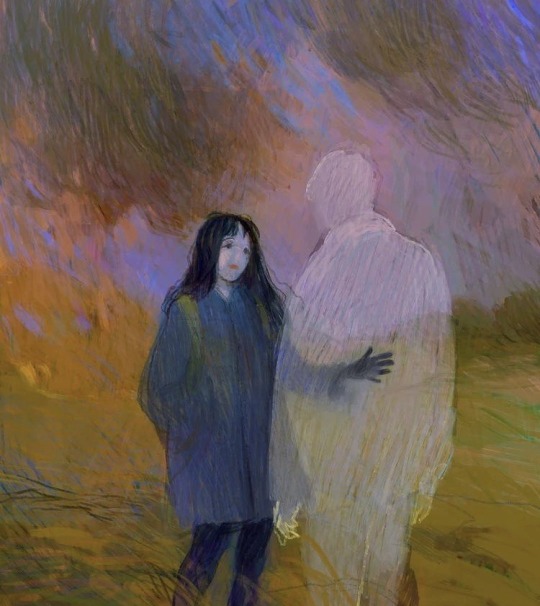

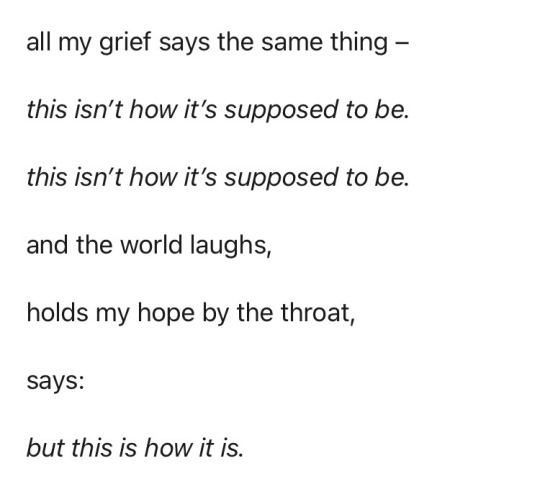




i lost you before i got the chance to meet you.
1. hilda doolittle, loss // 2. phoebe bridgers, waiting room // 3. holly warburton // 4. matthew goulish, to grieve // 5. fortessa latifi, the truth about grief // 6. lord huron, in the wind // 7. a. timofeev, spring // 8. @heavensghost on tumblr // 9. phoebe bridgers, smoke signals
#dead sibling trauma lol#web weaving#paralells#compilations#idk if i like this one tbh but . hiii#on grief#on death#on trauma#on siblings
2K notes
·
View notes
Text

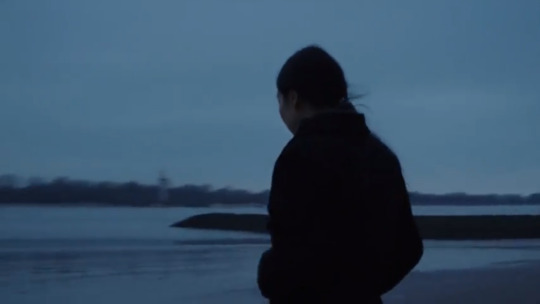

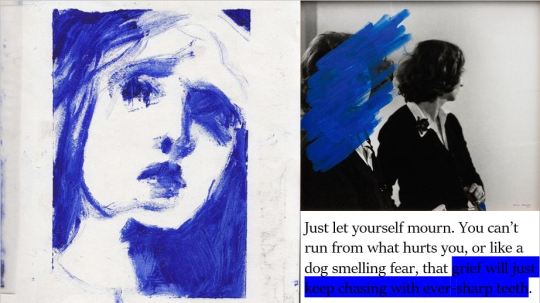
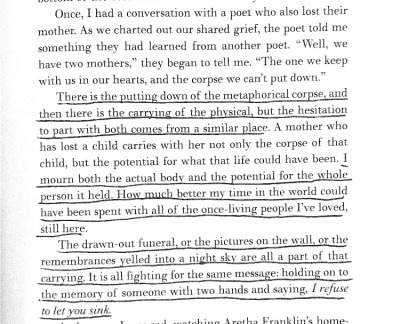



on grief
sherman alexie grief calls us to the things of this world \\ one the beach at night alone (밤의 해변에서 혼자) (2017) dir. hong sang-soo \\ a.k. blakemore father's last escape \\ holly warburton (@holly-warbs) \\ helena almeida untitled (1967) \\ elizabeth acevedo clap when you land \\ hanif abdurraqib a little devil in america: “on going home as performance” \\ matthew goulish to grieve \\ barbara crooker grief \\ ocean vuong the weight of our living: on hope, fire escapes, and visible desperation \\ picasso the old guitarist (1903-04) \\ amanda strand father and daughter
kofi
#on grief#my webweaving#mine#webweaving#web weaving#webs#parallels#compilations#intertextuality#webweave#web weave#sherman alexie#grief calls us to the things of this world#amanda strand#father and daughter#a.k. blakemore#father's last escape#on the beach at night alone#hong sang-soo#holly warburton#helena almeida#clap when you land#elizabeth acevedo#Hanif Abdurraqib#to grieve#matthew goulish#barbara crooker#grief#picasso#pablo picasso
423 notes
·
View notes
Text
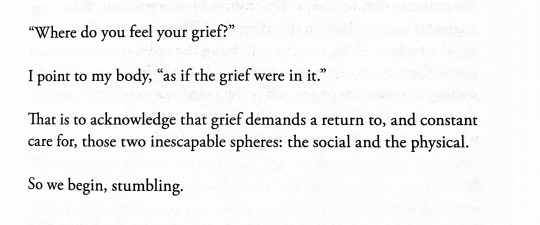
Matthew Goulish, To Grieve
13 notes
·
View notes
Text
Sustaining a Writing Practice
Matthew Goulish
Try never to exceed 90% effort.
Correspond regularly with trusted friends.
Find a way, even if small, to act on your political beliefs.
Encourage other people.
Appreciate nature by learning the names of flowers, trees, birds, animals, and clouds.
Commit yourself to a minimum daily creative practice.
Appreciate the difficult as a force of aspiration; the mind thrives on novelty.
Try not to think of anything as a “big deal.”
Practice the above list diligently, but deviate from it when necessary.
72 notes
·
View notes
Text
Omnidawn's Single Poem Broadside Poetry Contest!
Accepting electronic & postal submissions: March 1 to April 22.

Open to all writers: no expectations or limits regarding the amount of poetry a writer has published.
Winner receives $1,000, letterpress publication of broadside, 50 copies, and publication of the winning poem in OmniVerse.
Dan Beachy-Quick will judge:

Dan Beachy-Quick is the author of six books of poetry, North True South Bright (2003), Spell (2004), Mulberry (2006), This Nest, Swift Passerine (2009), and Circle's Apprentice (2011, Winner of the Colorado Book Award in Poetry), and gentlessness (2015). He is also the author of a book of interlinked meditations on Herman Melville s Moby-Dick, titled A Whaler s Dictionary (2008), a collection of essays, meditations, and fairy tales, Wonderful Investigations (2012), a study on John Keats, A Brighter Word Than Bright: Keats at Work (2015), and most recently, a collection of essays, fragments, and poems, Of Silence and Song (2017). His pocket series or chapbooks include SHIELDS & SHARDS & STITCHES & SONGS (Omnidawn) & the forthcoming Variations on Dawn & Dusk (Omnidawn). Two book-length collaborative projects are also available: Conversities (2012, with Srikanth Reddy) and Work from Memory (21012, with Matthew Goulish). His poems have appeared widely in such journals as The Boston Review, The New Republic, Fence, Poetry, Chicago Review, VOLT, Colorado Review, and New American Writing. His essays and reviews have appeared in The Southern Review, The Poker, The Kenyon Review, The New York Times, The Denver Quarterly, Interim, and elsewhere. His essays have been marked "notable" in multiple collections of Best American Essays, and poetry has been included in Best American Poetry. He is the recipient of a Lannan Foundation Residency and has been a winner of the Colorado Book Award, and a finalist for The William Carlos Williams Award, and the PEN/USA Literary Award in Poetry. In 2016 he was named a Guggenheim Fellow in Poetry. He teaches poetry workshops and literature courses. at Colorado State University.
For more info: www.omnidawn.com/contest
1 note
·
View note
Photo
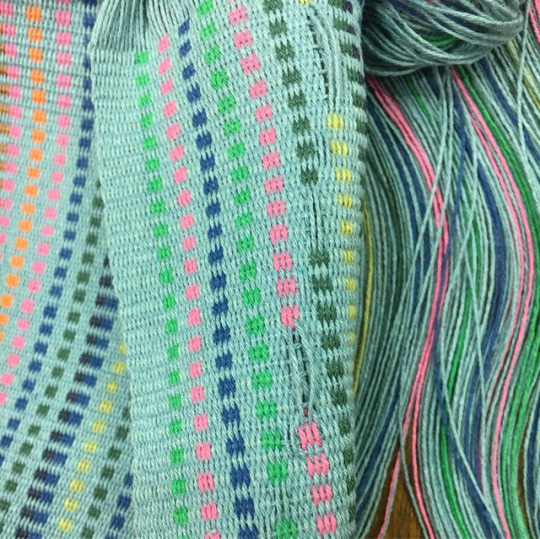
when words become undone ➿ thinking of rhyme and meter in textiles and different systems of writing 。。。 also thinking of @evryhshsadr Matthew Goulish's low-key life-changing class of the same name, Systems of Writing 🙏Can't believe it's been nearly a year since then 😮 。 。 。 this one spells: 。 "the warmth of a home is also enjoyed, as the nostalgia for a place to coil up in, made from arms or words." - Luce Irigaray (at Tainan National University of the Arts)
0 notes
Photo
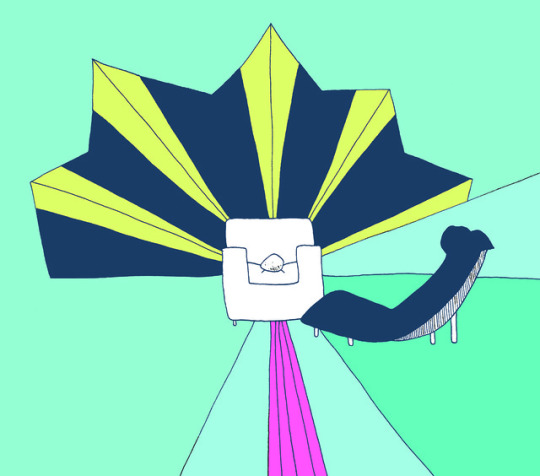
Dr. Rock
by Coco Picard
April 9 to July 1, 2017
Opening reception: Sunday, April 9 from 3-6PM
Dr. Rock transforms the Franklin Gallery into a therapist’s office where visitors are invited to sign up in advance and discuss their respective anxieties with the rock in attendance. Known for their humble stature and centuries of experience, Dr. Rock has kindly agreed to donate their services for up to three consecutive Sundays. Email [email protected] and schedule your free appointment today!
This exhibition is tied to the launch of Picard’s debut graphic novel ten years in the making. The Chronicles of Fortune (Radiator Comics) follows the life of Fortuna, a depressed and thus ineffectual super hero, and her alter-ego Edith-May as they spend a night on Alcatraz, discover a talking mountain growing in their apartment, befriend a crying crocodile, and are swindled into buying a $50 goldfish for its alleged singing abilities.
Coco Picard is the creative pen name of Caroline Picard, an artist, writer, publisher, and curator who explores the figure in relation to systems of power, how the human relates to its environment and what possibilities might emerge from upturning an anthropocentric world view. Her critical writing has appeared in publications like ArtForum (critics picks), Flash Art International, Hyperallergic, Paper Monument, The Seen, and e-flux’s live blog. In 2014, she was the Curatorial Fellow at La Box, ENSA in France, and became a member of the SYNAPSE International Curators’ Network of the Haus der Kulturen der Welt in Berlin in 2015. She is the Executive Director of The Green Lantern Press—a nonprofit publishing house and art producer in operation since 2005—and Co-Director of Sector 2337, a hybrid artspace/bar/bookstore in Logan Square. www.cocopicard.com
Praise for The Chronicles of Fortune
“The unlikely adventures of an even less likely superhero, The Chronicles of Fortune unspools through history and happenstance gathering into its narrative orbit a ragtag crew of sidekicks and gadflies. Picard draws with the angles and tangles of a witty wire sculpture, and writes along an equally idiosyncratic path through frustration, friendship and loss.” -Edie Fake (Gaylord Phoenix, Memory Palaces)
“I’ve never read a more whimsical meditation on death and loss. Picard weaves childlike escapism with playful symbolism in a series of melancholy vignettes that somehow overflow with love, humor, and hope.” -Ezra Claytan Daniels (Upgrade Soul, The Changers)
“Alternately sweet, funny, and heartbreaking, The Chronicles of Fortune is a charming, lyrical meditation on fragile connections. Picard crafts tidy, seemingly unrelated vignettes which slowly knit themselves together into a touching and thoughtful finish.” -Sarah Becan (I Think You’re Sauceome, Complete Ouija Interviews)
“at first seeming like a dreamlike biographical comic with a cool meditative art zine aesthetic, the chronicles of fortune slowly reveals a sweet blend of deceptively simple narrative devices and complex philosophical ideas while keeping a fun vibe through the entire comic book ride. you won't regret injecting this book into your soul.” -Farel Dalrymple (Pop Gun War, The Wrenchies)
“Have you ever visualized the speech of a moth? Coco Picard has, and rendered it with her unerring expressive line, one many unembellished details in the universe of Chronicles of Fortune. Edith-May, who carries her etiolated super-hero alter-ego Fortuna like a guilty secret, wanders through territories historical, biological, imaginary, enchanted, and ordinary all at once, as she sets about rebuilding her life after the trauma that transformed her. Picard illuminates secret spaces and exquisitely captures the uncharted emotional terrains of loss experienced as a young adult. Seeing these fragile landscapes rather than defining them Chronicles journeys into odd and alluring worlds with tones and compositions that freshly glimpse grief and resilience. Chronicles of Fortune, an illuminating achievement, ushers the comic form into the 21st century in all its post-human exuberance and uncertainty.” -Lin Hixson & Matthew Goulish (Every house has a door)
About the Publisher:
Radiator Comics distributes, promotes, and publishes small-press, hand-made, and self-published comics books, graphic novels, and zines. Through its distro, Radiator Comics represents over 50 alternative comics artists from around the country, providing titles to individuals, stores, and educational institutions. Radiator Comics is run by Neil Brideau who has been involved with the self-publishing and comics communities for over a decade. The Chronicles of Fortune is Radiator Comics' first book. www.radiatorcomics.com
THE FRANKLIN
3522 W. Franklin Blvd, Chicago IL 60624
(312)823-3632
Hours: Saturdays 2-5PM and by appointment
http://thefranklinoutdoor.tumblr.com/
Instagram #thefranklinoutdoor
Twitter @TheFranklinChi
fb album: https://www.facebook.com/pg/thefranklinoutdoor/photos/?tab=album&album_id=1472962969437932
Press: http://chicagoartistwriters.com/coco-picard-dr-rock-at-the-franklin/
2 notes
·
View notes
Text
TOP V. WEEKEND PICKS (5/30-6/5)
1. Highly Illogical
June 1st, 2019 6-9PM
Work by: Jason Dunda and Erin Washington
Langer Over Dickie: 1309 N Leavitt St, Chicago, IL 60622
2. Cheri Reif Naselli: INTERIORITY
May 31st, 2019 6-9PM
Work by: Cheri Reif Naselli
ARC Gallery: 1463 W Chicago Ave, Chicago, IL 60647
3. Recline Somberly like Fallen Heroes
May 31st – June 2nd, 2019
Work by: Millie Kapp, Matt Shalzi, Lin Hizon, Matthew Goulish
Regards: 2216 W Chicago Ave, Chicago, IL 60622
4. Jennifer Cronin: Seen and Unseen
June 1st, 2019 6-9PM
Work by: Jennifer Cronin
Elephant Room Gallery: 704 S Wabash Ave, Chicago, IL 60605
5. Holly Holmes: All Thou Lost, Bring It Too Day
June 2nd, 2019 2-4PM
Work by: Holly Holmes
Compound Yellow: 244 Lake St, Oak Park, IL 60302
Hey Chicago, submit your events to The Visualist here: http://www.thevisualist.org.
TOP V. WEEKEND PICKS (8/17-8/23)
Episode 691: Goat Island
TOP V. WEEKEND PICKS (5/16-5/22)
TOP V. WEEKEND PICKS (11/29-12/5)
TOP V. WEEKEND PICKS (11/1-11/7)
TOP V. WEEKEND PICKS (5/30-6/5) published first on https://footballhighlightseurope.tumblr.com/
0 notes
Text
TOP V. WEEKEND PICKS (5/25-5/31)
1. Indigeneity, Gender, and Sexualities
May 26, 2017, 10AM-3PM
Newberry Library: 60 W Walton St, Chicago, IL 60610
2. Mariame Kaba discusses Trying to Make the Personal Political
May 27, 2017, 3-5PM
Presentation by: Mariame Kaba
Self-Reliance School: 244 Lake St, Oak Park, IL 60302
3. TENSES
May 28, 2017, 4-7PM
Work by: Ruby T
The Back Room at Kim’s Corner Food: 1371 W Estes Ave, Chicago, IL 60626
4. Underground Comedy Night at WORLDPLAY
May 28, 2017, 6-9PM
Work by: Alberto Aguilar, Alejandro Jimenez Flores, Alex Bradley Cohen, Amy Lockhart, Chris Santiago, Dana Bassett, Danielle Rosen, Edra Soto, Erin Hayden, Jared Larson, Jesse Malmed, Jessica Campbell, Jorge Lucero, Kate Bowen, Matthew Goulish, Morley Musick, and Stephanie Graham
Produce Model Gallery: 1007 W 19th St, Ste 1, Chicago, IL 60608
5. Echoes: Color, Pattern and Design
May 26, 2017, 6-8PM
Work by: Katy Kirbach, Ryan Scheidt, and Victoria Finday Wolfe (Curated by Nora Renick Rinehart)
Lillstreet Art Center: 4401 N Ravenswood Ave, Chicago, IL 60640
Hey Chicago, submit your events to the Visualist here: http://ift.tt/2ax8j1m
TOP V. WEEKEND PICKS (8/4-8/10)
EDITION #16
Top 5 Weekend Picks (2/10-2/12)
TOP V. WEEKEND PICKS (5/11-5/17)
TOP V. WEEKEND PICKS (4/6-4/12)
from Bad at Sports http://ift.tt/2qjxxHi
via IFTTT
0 notes
Text
what is taking note(s)?
taking note(s)_performing care is a research project and performative documentation work by Jen Archer-Martin of Massey University College of Creative Arts, presented as part of Performing, Writing and The Performance Arcade 2017 in Wellington, Aotearoa New Zealand. The taking note(s) blog is an online archive of ‘notes’ on ‘caring labours’ or ‘small acts of care’ performed by others (human or non-human) over the duration of these events.
*Taking Notes will be going live on the 10th of March (this Friday)
taking note(s) proposes to act in service of the Performing, Writing symposium and The Performance Arcade, by way of noticing, documenting and archiving the many ‘small acts of care’ that will occur over the course of the events. Taking inspiration from Stephen Bottoms and Matthew Goulish’s Small Acts of Repair: Performance, Ecology and Goat Island, the work seeks to both acknowledge and perform small acts of care through reading and writing the relationships between site/situation, text/performance and people/actors. Like Bottoms and Goulish, taking note(s) “happily participates in the failure of documentation to capture or codify the ... performances... that it makes reference to,” positioning documentation as a performative practice in its own right that does not attempt to remain faithful, but rather to procreate and proliferate.
Shifting from a notion of ‘repair’, which presupposes an existing state of disrepair, the proposed work intends to appreciate the acts of ‘care’ that often go unnoticed. Carol Gilligan states that “a feminist ethic of care begins with connection” between people and between public and private labours. Witnessing, or taking notice, of these affective labours that occur in the private realm, or behind the scenes, is in itself an act of care that begins to reconnect and make visible the ecologies of care that underscore any activity. In compiling an archive of ‘notes on caring labours’ the work attempts to make a case for a spatio-temporal practice of caring, and to begin to inscribe a space for this practice that sits somewhere between private and public – being present without taking up time and space; being in service without losing self; acting alongside rather than under or after. It also asks – who or what are the performers of these small acts? – remaining open to the possibility of the actor being a non-human agent such as an insect, object, or room.
Methods of ‘note-taking’ will not be prescribed. Ways of reading the site/situation may include ‘listening to’, ‘watching’, ‘sitting with’, ‘participating in’. Ways of (site-)writing may range from scrawling in a notebook or inputting notes into an iPhone app, to making audio-visual recordings of recalled and re-performed acts.
The taking note(s) blog will be compiled over the duration of the Performance Arcade and the four turns of the Performing, Writing symposium (on Live, on Site, on Score and on Voice), taking note(s) of sites and situations through a set of immersive and embodied practices that give voice to the small acts of care that underscore, rather than score, the event(s).
0 notes
Quote
We may agree on the premise that each work of art is at least in part perfect, while each critic is at least in part imperfect. We may then look to each work of art not for its faults and shortcomings, but for its moments of exhilaration, in an effort to bring our own imperfections into sympathetic vibration with these moments, and thus effect a creative change in ourselves
Matthew Goulish, 39 Microlectures
1 note
·
View note
Photo

"What will happen to our Tweets after we die?"
Join us 9/26 for an evening with Lin Hixson and Matthew Goulish, presented as part of the series The Persistence of Performance.
[Rosemary Lee. Ascending Fields. 1992. Courtesy of the artist. © Hugo Glendinning]
#Lin Hixson#Matthew Goulish#Matt Goulish#Performance#Media and Performance Art#Media and Performance#Media & Performance Art#Media & Performance#FIAF#Crossing the Line#Crossing the Line Festival#Performance Art
241 notes
·
View notes
Quote
A work is an object overflowing its frame. Work is an event in which the human participates; the human is an organism that works. A work works when it becomes an event of work. A work works when it becomes human. This becoming occurs when we realize it. Specifically, it occurs when we realize it where it occurs. It occurs inside. We do not need to find a way into a work, since the work is already inside. Instead we realize a work and its harmony with our point of view. Then it and we begin to work, and the play of work begins.
Matthew Goulish, 39 Microlectures: In Proximity of Performance, 2000
#matthew goulish#microlecture#lecture#proximity#performance#work#quote#human#organism#realize#occur#inside#way#harmony#begin#plan#perfoming#form#event
6 notes
·
View notes
Text
When we engage the creative mind, the object upon which we focus our energy seems to proliferate. For example, if we attempt to make a collection of green things, and we engage the creative mind for this task, we begin to see green everywhere.
Often we think we can engage the critical mind separately from the creative mind. We think that to be critical means to be negative. In fact, critical simply means discerning, or able to separate the observed object into parts. The critical mind turns out to be another version of the creative mind.
If we think of critical as negative, however, if we think our critical task is to observe and make a collection of problems to be corrected, then problems become the object of our creative mind masquerading as a critical mind. We then start to see problems everywhere. We become proficient at observing problems. We become one who is defined by the ability to observe a proliferation of problems. Because of this approach, the creative mind seems to shut down when the critical mind is engaged. In fact, the creative mind has only been engaged negatively, and because of this habit, when we set out to make our own work, to engage our creative mind deliberately, we experience paralysis because we have trained ourselves to observe only problems.
For now we will try an experiment. We will engage the critical mind to observe the moments in the work we are looking at that seem to us the most exceptional and inspiring—the miraculous moments. Maybe this approach will allow us to keep the creative mind deliberately engaged as we engage the critical mind. Maybe we will start to see miraculous moments everywhere. We will become one who is defined by the ability to observe a proliferation of miracles.
Rather than making a critical response to the work you are observing, make a creative response to it. Think of the creative response as your own work that would not have existed without the work you are responding to. Start with the most obvious miraculous (exceptional, inspiring, unusual, transcendent, or otherwise engaging) moment that you see in the work. What appears to you obvious may not appear obvious to anyone else.
You may have an association with that moment that makes the moment miraculous for you. You may echo the moment in your creative response, multiply it, work out from it in some other way. The moment may have been intentional or accidental. Instead of a moment, maybe you respond to a structural element, a visual element, a spatial element, or some other quality in the work observed.
If we can destabilize the boundaries between the critical and the creative, we may enrich them both, and discover a communal practice—one that relies on one another for inspiration and energy, both critically and creatively.
—Matthew Goulish
While generating an archive of my old posts in case things go south with this Yahoo deal, I came across this quote, which I posted a year and a half ago.
31 notes
·
View notes
Text
TOP V. WEEKEND PICKS (5/30-6/5)
1. Highly Illogical
June 1st, 2019 6-9PM
Work by: Jason Dunda and Erin Washington
Langer Over Dickie: 1309 N Leavitt St, Chicago, IL 60622
2. Cheri Reif Naselli: INTERIORITY
May 31st, 2019 6-9PM
Work by: Cheri Reif Naselli
ARC Gallery: 1463 W Chicago Ave, Chicago, IL 60647
3. Recline Somberly like Fallen Heroes
May 31st – June 2nd, 2019
Work by: Millie Kapp, Matt Shalzi, Lin Hizon, Matthew Goulish
Regards: 2216 W Chicago Ave, Chicago, IL 60622
4. Jennifer Cronin: Seen and Unseen
June 1st, 2019 6-9PM
Work by: Jennifer Cronin
Elephant Room Gallery: 704 S Wabash Ave, Chicago, IL 60605
5. Holly Holmes: All Thou Lost, Bring It Too Day
June 2nd, 2019 2-4PM
Work by: Holly Holmes
Compound Yellow: 244 Lake St, Oak Park, IL 60302
Hey Chicago, submit your events to The Visualist here: http://www.thevisualist.org.
TOP V. WEEKEND PICKS (8/17-8/23)
Episode 691: Goat Island
TOP V. WEEKEND PICKS (5/16-5/22)
TOP V. WEEKEND PICKS (11/29-12/5)
TOP V. WEEKEND PICKS (11/1-11/7)
TOP V. WEEKEND PICKS (5/30-6/5) published first on https://footballhighlightseurope.tumblr.com/
0 notes